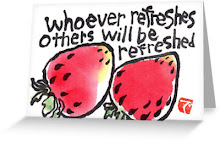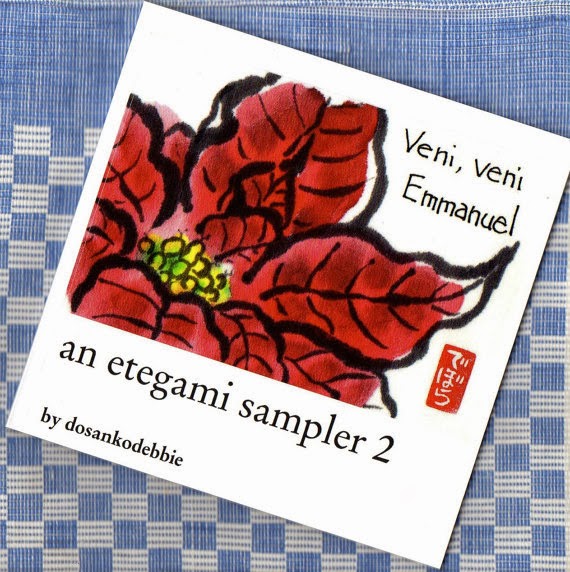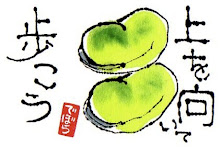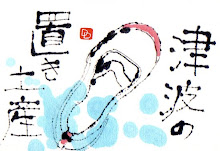

Like February 3 (
bean-throwing festival) and March 3 (
doll's day festival), May 5 is one of the "seasonal divisions" that we celebrate during the year in Japan. We call this day
Kodomo-no-Hi (Children's Day), the day on which we express our hope that our children will grow up physically strong and courageous against adversity. One of our customs is to run huge carp-shaped windsocks called
koi-nobori up a flagpole set up outside specifically for that purpose.
When I was little, the festival was for boys, and people hung as many
koi-nobori as there were boys in the household. Nowadays everyone in the family gets represented. Sometimes villages will stretch a rope across a stream or between two buildings and hang enough
koi-nobori to represent the whole community. It's an
amazing sight when the wind blows, making the
koi-nobori appear as though they are swimming vigorously against an imaginary river current and leaping over imaginary rapids.
Today, thanks to the assistance of volunteers from all over the country, special Children's Day programs were held for the children in evacuation centers all over the Tohoku region. I don't know if there has ever been a Children's Day that meant as much to me as it did today. I trust that these kids will successfully maneuver the trials that they face, and that they will grow up to be strong and courageous adults.
The Japanese words on the etegami at the top say "we are all connected."










































